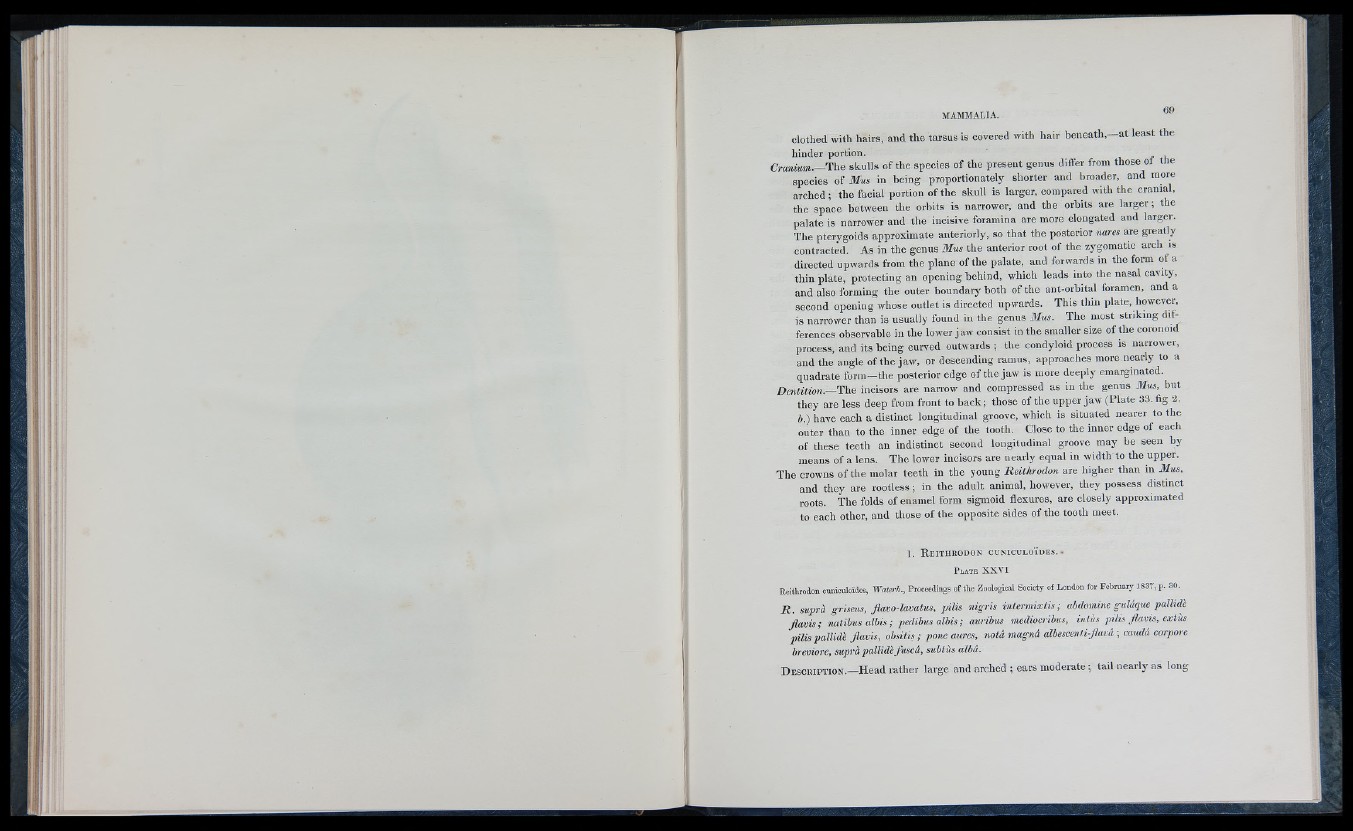
Iî
i
i
' / i
im\ i
MAMMA LIA .
clothed with hairs, and the tarsus is covered with hair beneath,—at least the
hinder portion. u r n
C r a n i u m . ^ T h e skulls of the species of the present genus differ from those oi the
species of Mus in being proportionately shorter and broader, and more
arched; the facial portion of the skull is larger, compared with the cranial,
the space between the orbits is narrower, and the orbits are larger ; the
palate is narrower and the incisive foramina are more elongated and larger.
The pterygoids approximate anteriorly, so that the posterior nares are greatly
contracted. As in the genus Mus the anterior root of the zygomatic arch is
directed upwards from the plane of the palate, and forwards in the form of a
thin plate, protecting an opening behind, which leads into the nasal cavity,
and also forming the outer boundary both of the ant-orbital foramen, and a
second opening whose outlet is directed upwards. This tliiu plate, however,
is narrower than is usually found in the genus 3Ius. The most striking dii-
ferences observable in the lower jaw consist in the smaller size of the coronoid
process, and its being curved outwards ; the condyloid process is narrower,
and the angle of the jaw, or descending ramus, approaches more nearly to a
quadrate form—the posterior edge of the jaw is more deeply emarginated.
Dentition—Tiie incisors are narrow and compressed as m the genus 3Ius, but
they are less deep from front to back ; those of the upper jaw (Plate 33. fig 2.
h .) have each a distinct longitudinal groove, which is situated nearer to the
outer than to the inner edge of the tooth. Close to the inner edge of each
of these teeth an indistinct second longitudinal groove may be seen by
means of a lens. The lower incisors are nearly equal in width to the upper.
The crowns of the molar teeth in the young Reithrodon are higher than m Mus,
and they are rootless ; in the adult animal, however, they possess distinct
roots. The folds of enamel form sigmoid flexures, are closely approximated
to each other, and those of the opposite sides of the tooth meet.
1. R eithrodon cuniculoïües. •
P l a t e X X V I
Eoitlirodon cumcuWdes, Waterh., Proceedings of the Zoological Society of London for Fchrnary 1837, p. 30.
R . suprà grisms, flavo-lavatus, pilis nigris intermixtis; abdomine guldque pallidè
flavis; natibus albis ; peilibus albis ; auribus mediocribus, intus pihs flavis, extus
pilis pallidè flavis, obsitis ; pone aures, notd magnâ albescenti-flavâ ; caudâ corpore
breviore, suprà pallidè fuscâ, subtùs albâ.
D escription.—H ead rather large and arched ; ears moderate ; tail nearly as long
mIi'- '■
■x\